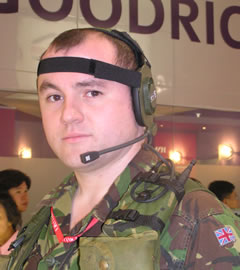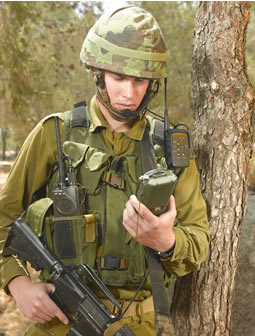PRR is a short range radio operating independently of any infrastructures. Currently available systems are functioning in the 2.4GHz and High UHF bands, offering effective short range communications with low interference and adequate bandwidth utilization. Most systems are offering duplex conference operating modes, and selective one-to-one (peer to peer) communications. PRR communicators rely on a network concentrator unit (which could be one of the radios) to communicate with all systems and act as system synchronization unit. Some systems are designed to operate without synchronization, enabling truly independent communications.
 Modern intra-squad specialized Personal Role Radios (PRR) offer effective communications within the squad and between combat teams, enabling effective dismounted infantry operations at a level previously reserved only for Special Forces.
Modern intra-squad specialized Personal Role Radios (PRR) offer effective communications within the squad and between combat teams, enabling effective dismounted infantry operations at a level previously reserved only for Special Forces.
Current PRRs offer conference operating mode, when the commander can speak to all soldiers and get their responses) or in peer-to-peer (one on one). Systems utilize full duplex communications which is mimics natural voice communications. PRRs support line of sight communications at ranges of few hundred meters, and sustain continuous operation for 10 – 12 hours (sufficient for overnight activity). Systems support mainly voice but some can also transfer data at low bit rate, to distribute reports, preset messages etc. As PRRs operate at very low power and high frequencies, there are significant difficulties in communications in urban terrain, mountainous area and densely wooded (jungle) environments. Another limitation is the absence of data communications, and low data rate offered by those sets that do support data communications. Future systems, currently under development in the USA, are part of the Soldier Level Integrated Communications Environment (SLICE) program, which will be part of the Future Force Warrior infantry combat system.



















